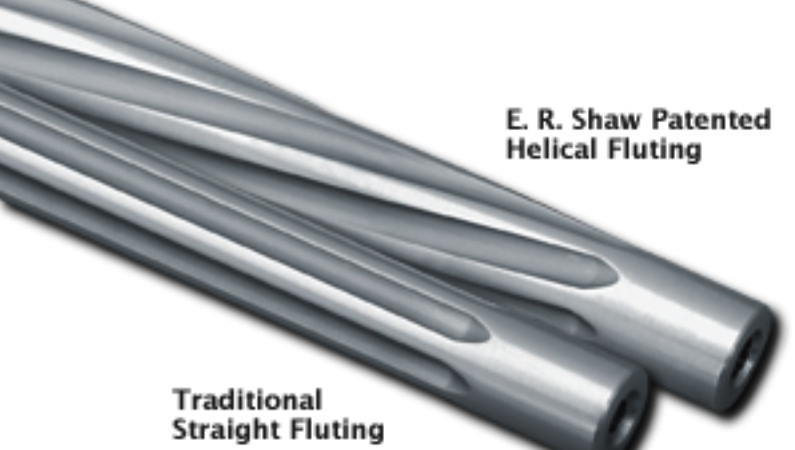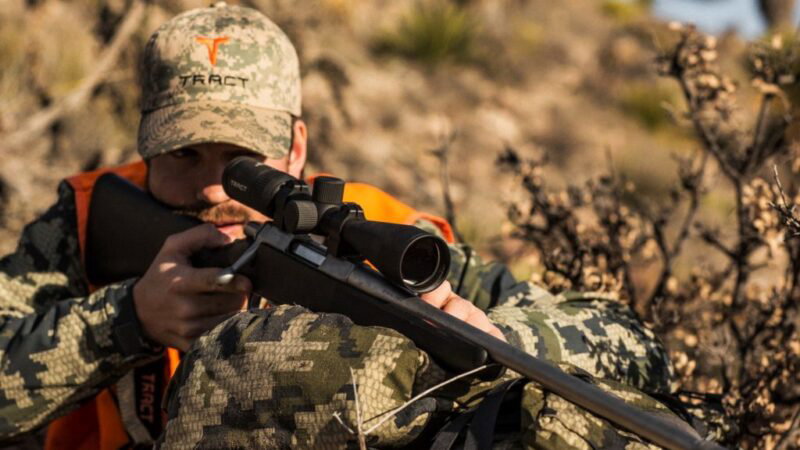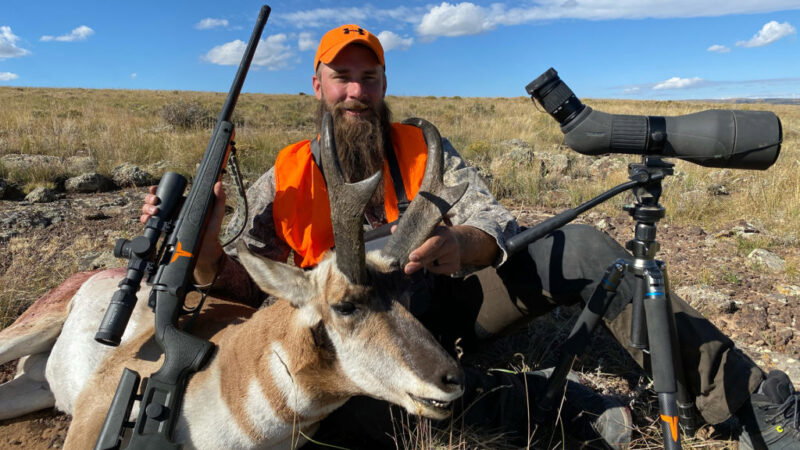5 Long Range Shooting Tips
5 Long Range Shooting Tips
These 5 long range shooting tips can help you start consistently tightening up your groups.
5 Long Range Shooting Tips. There’s typically a buildup for shooters. We start young with a Red Ryder before graduating to something with a little powder like a .22 LR. From there it’s a .243, then .30-06, and so on.
Our distances start small too. Twenty yards with a BB gun is a heck of a shot; just as 75-100 is with a .22.
Along with the buildup comes the need to challenge ourselves. Running 6.5 Creedmoor rounds downrange over and over again at 200 yards can get boring. So, what’s next?
Long Range Shooting Tips
We continue the buildup, of course. We start thinking about hitting targets at considerable distances and exactly how to get there. These following five long range shooting tips can help you consistently tighten your groups when you’re really trying to challenge yourself. For a shooter working toward further distances, what’s more satisfying than the ring of steel reverberating back to you from 500-plus yards?
The Right Rifle
Start with the right rifle and caliber. Above we mentioned the 6.5 Creedmoor. It’s a flat-shooting round with little recoil, making it a great option for long range shooters.
You’ll also want to consider the manufacturer. Will you go custom or production? The weight of the rifle can have significant impact on how well you shoot too. The heavier the gun, the better you’ll be able to anchor it down when finding a good rest, which we’ll talk about in a minute.
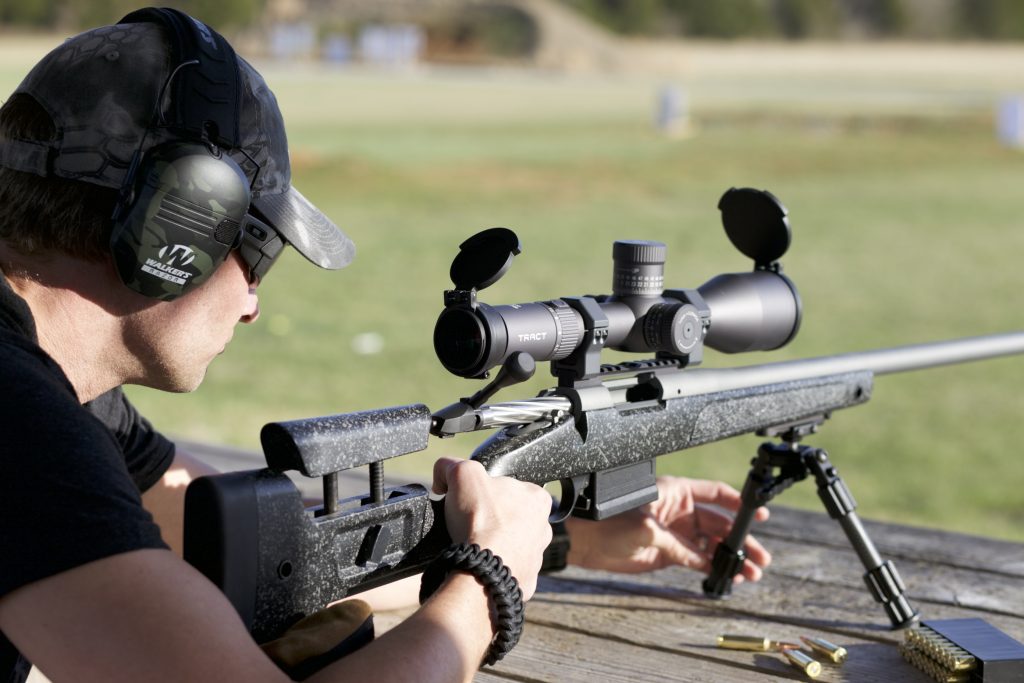
The Bergara HMR Pro in their Premier Series is like custom quality, but with standardized features for greater efficiencies. Provides near custom performance at prices that are affordable to serious long-range shooters.
Get Good Optics
The rifle and rifle scope combination is the basis for everything else we’re going to talk about. You must have the right tool, by which you use the right tactics, to maximize your efforts. Don’t skimp on glass. Go for optics built for long range shooting.
Figure out what reticle system you’d like to learn between minute of angle (MOA) and milliradian (MRAD); there are advantages to both. Once you know the round you’ll be shooting, the bullet weight, elevation, and scope, you can use a ballistic calculator to help you learn more about your turrets and doping your scope.
Eye relief is important – the distance between the scope’s eyepiece and your eye. As is its light gathering ability and clarity. A lot goes into a long-range scope, but don’t let that intimidate you. There is a ton of great information both here on the TRACT blog and elsewhere that can help you make the right decision.
Sean Utley puts the TORIC 4.5-30×56 ELR Scope through its paces in this range test.
Have a Good Rest
Precision shooting requires a good rest. You might lean into a bag, or a pack, or support your rifle with a bipod. According to William ” Bart” Bartholomew, shooting instructor at the Bergara Academy, here are the fundamentals when shooting from a supported shooting position:
– Never allow the barrel to touch any part of the support. This will disturb the natural whip of the barrel and degrade accuracy.
– Cushion the rifle on the support. This will keep the weapon from sliding around and make the position more sound. The location of the support is important. The best location is just behind the front sling swivel. Avoid getting the balance of the weapon to become an issue.
– Use the prone position whenever possible as this is the most stable one.
– Ensure that the weapon is straight on the support without touching the sides of the rifle. Recoil must be straight back into the shooter and the support should allow this to happen freely.
Trigger Control Long Range Shooting
Trigger control is perhaps the hardest marksmanship principle to master. It is the ability to squeeze the trigger which allows the pin to hit the primer which ignites the powder in the cartridge and projects the bullet accurately downrange. “Accurately” is the keyword here. Because anyone can jerk the trigger and fire a gun. The goal is to be able to do so consistently without disturbing any part of your setup, including sight picture, your rest, and body position, to name a few.
Where you place your finger on the trigger is a critical factor. While it may vary for shooters of different hand sizes, the ideal placement is between the tip of the trigger (pointer) finger and the second joint. A great way to practice is by dry firing the rifle at home. Especially when our busy lives keep us from getting to the range as often as we’d like. Practice as you would if you’re at the range by getting into a solid position, etc. Just be sure the rifle is unloaded (you may even take the bolt out).
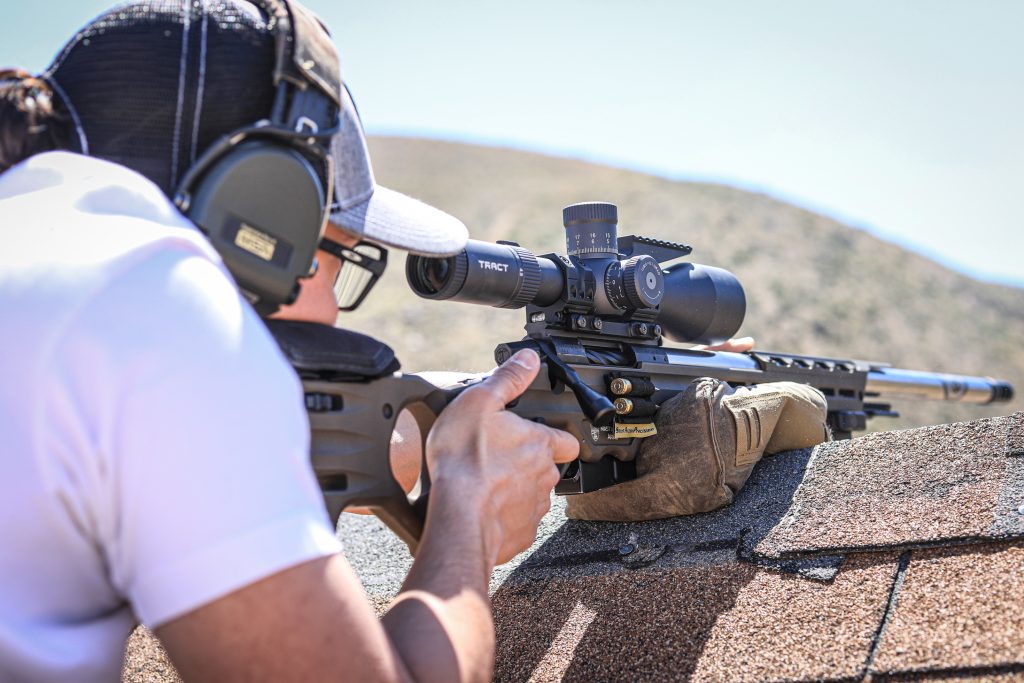
Most shooting errors result from poor trigger control. Some claim that it is the hardest marksmanship principal for the novice shooter to grasp.
Breathing Techniques
Snipers will often say they like to shoot on the respiratory pause on the down breath. This is a two to three second (on average though you could extend it depending on physical fitness, stress, and lung capacity) window then all the air is out of your lungs. Your body is more naturally relaxed.
While most of us (versus a sniper) are going to be in a more relaxed, controlled environment when shooting at long range targets, simply the thought of making the shot can cause stress. So, take as much time as you need. It’s just as important to have the air out of the body as it is to have a slow heartbeat.

Bonus: Practice Makes Perfect
Or so the saying goes. You may have noticed that we used the word consistency often throughout the article. And that’s for no other reason than us trying to state the importance of fine tuning your skills and practicing them often.
If your technique is good, the more you shoot a basketball, the better you’ll become. If your technique is good, the more you hit a golf ball, the better you’ll become. Long range shooting is the same.
So, shoot as often as you can if you want to maximize your long-range accuracy and yes, consistency. We have no doubt that if you’re willing to invest some time and money, it’ll only be a matter of time before that aforementioned steely ring will fill you with joy.
To learn more about the proper techniques to help enhance your long-range shooting skills, check out our full Rifle Marksmanship Series:





